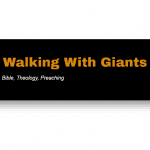A sermon should be about one thing

The text of a sermon can be anything from (less than) a single verse to (more than) an entire book. Proverbs, aphorisms, summary statements and theologically rich passages in, say, Paul’s letters serve well as short texts. Narratives and parables more suitably serve as longer texts.
Whatever the length of the text, the sermon based on that text must hang together. It must have unity. This means paying close attention to the context. How does your text (whether short or long) fit into the whole?
Many espouse the ‘big idea’ approach. This means looking for the main idea of the passage before you. Trouble is, that a passage may not have a single ‘big idea’, but rather a cluster of ideas. The task then is to discern why the inspired author has grouped these ideas together:
‘They may be building on one another, or leading to a particular crescendo, or all exemplify something, or all independently serve the broader purpose for which the book was written.’
To approach the text in this way helps rescue us from the the danger of trying to preach everything in the text. It helps us see the wood for the trees. It enables us to separate the main thing(s) from the secondary things. It lends unity to the sermon.
Based on this article by Stephen Kneale.